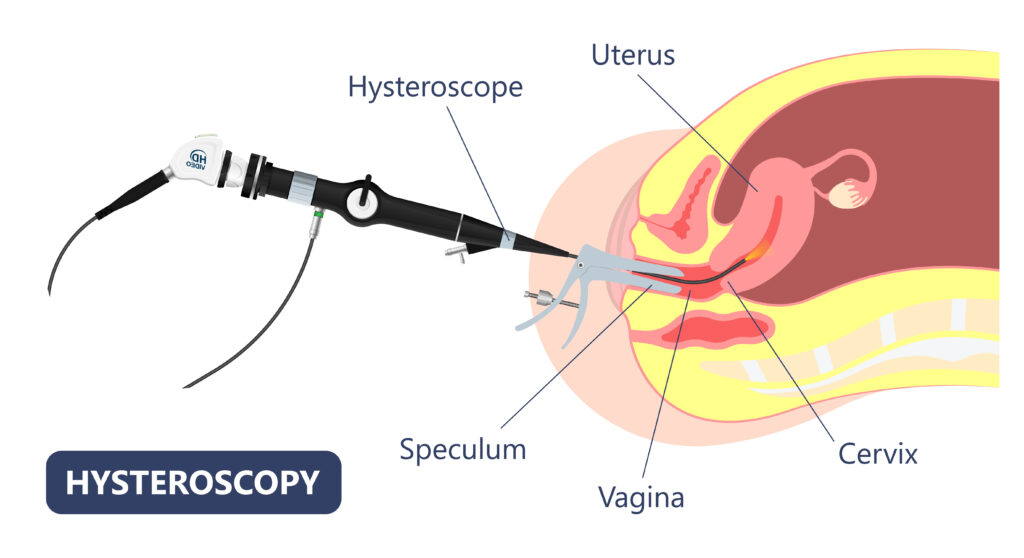

A hysteroscopy is a procedure used to examine the inside of the womb (uterus). It’s carried out using a hysteroscope, which is a narrow telescope with a light and camera at the end. Images are sent to a monitor so your doctor or specialist nurse can see inside your womb. The hysteroscope is passed into your womb through your vagina and cervix (entrance to the womb), which means no cuts need to be made in your skin.When a hysteroscopy may be carried out A hysteroscopy can be used to: investigate symptoms or problems – such as heavy periods, unusual vaginal bleeding, postmenopausal bleeding, pelvic pain, repeated miscarriages or difficulty getting pregnant diagnose conditions – such as fibroids and polyps (non-cancerous growths in the womb) treat conditions and problems – such as removing fibroids, polyps, displaced intrauterine devices (IUDs) and intrauterine adhesions (scar tissue that causes absent periods and reduced fertility) A procedure called dilatation and curettage (D&C) used to be commonly used to examine the womb and remove abnormal growths, but nowadays hysteroscopies are carried out instead.






